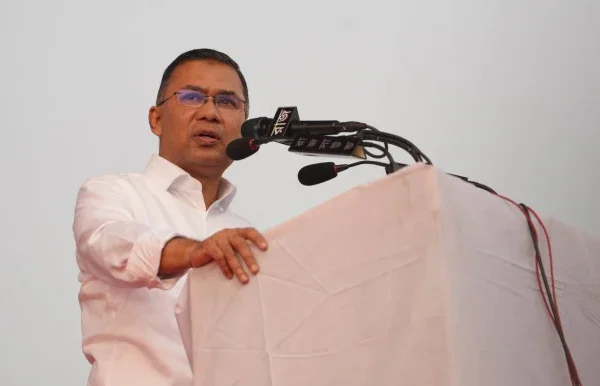4-lane project of Elenga-Rangpur Highway: Construction of Hatikumrul interchange nears completion
- Update Time : Monday, July 15, 2024

The interchange has modern technologies, including intelligent transport systems and solar power
TDS Desk:
Construction of the most sophisticated interchange – a place where two freeways meet – at Hatikumrul on the four-lane Tangail-Rangpur highway is progressing fast to transform communication with the country’s northern region.
34% of the physical work of the project has already been completed, with significant earth filling and pillar installation works done in many places, laying the groundwork for the interchange to take shape.
The interchange, which is being constructed in Sirajganj under the Roads and Highways Department’s SASEK Road Link Project-2, will facilitate the movements of vehicles in 22 districts of the country’s northern and south-western regions.
Recently visiting the project area, this correspondent found that around 200 structures in the 8-km-long project site have been demolished for constructing the interchange. The project area is also earth filled to construct piers, and various structures are being developed there.
Sources said designing the interchange started around 2019, and the Asian Development Bank (ADB) approved the detailed design on 2 April 2020. Tenders were invited on 18 June 2020.
The land acquisition survey report for the project was submitted on 15 June 2020. After that, an agreement was signed with the contractor in 2021 for constructing the Hatikumrul Interchange.
The contractor started working in December 2022. The project authority was able to hand over the land to the contractor in October 2022 and in the May-June period of 2023. Then the contractor got the opportunity to work on the site from the end of 2023 onward.
Since then, earth filling at the project site has been completed at 75%. Moreover, 1,000 pile castings out of 1,300, 89 pile caps out of 150, 96 pier columns out of 232, 31 pier caps out of 130, three box culverts out of five, 92 girders out of 862, and a 6.3 km boundary wall out of 8.26 km have been done.
Meanwhile, an RHD operation and maintenance office will be set up along with the interchange. A highway service area is also being constructed at Pachila in Sirajganj. Project sources said land acquisition for these works has also been done.
Md Mahbubur Rahman, project manager (Executive Engineer, RHD), SASEC Road Connectivity Project-2, told this correspondent, “We expect the main construction work of the interchange to be completed by December 2025. Hatikumrul Interchange has been developed following a more people-friendly design as compared to the Bhanga Interchange. It will allow a smooth flow of vehicles once it is operational. It will completely change the North Bengal region. At the same time, growth will increase by 1%.
This interchange has modern technologies, including intelligent transport systems and solar power. As a result, it will become an eco-friendly, modern, smart, and green interchange, he added.
Construction of the interchange was scheduled to be completed by December 2024, which has been extended until December 2025. The construction cost of this interchange, jointly financed by the Asian Development Bank and the Government of Bangladesh, has been estimated at Tk743 crore under SASEC-2 project.
The interchange is being constructed by a Chinese contractor, China Railway Construction Bridge Engineering Company. However, the project’s construction cost may increase further, said sources.
LATEST TECHNOLOGIES AT HATIKUMRUL
The state-of-the art technologies incorporated into Hatikumrul Interchange include variable message signs, which will be installed at all four entry and exit points of the interchange.
Surveillance cameras will be installed at the centre of the interchange. In addition to that, a local traffic management centre (TMC) will be set up in the project’s operation and management office building.
PROPOSAL TO NAME HATIKUMRUL INTERCHANGE AFTER SHEIKH RUSSEL
In a district coordination committee meeting, officials concerned proposed to name Hatikumrul Interchange “Sheikh Russel Hatikumrul Interchange”.
That proposal has been sent to the Ministry of Road Transport and Bridges, which has redirected it to the project office and asked about its rationale.
















